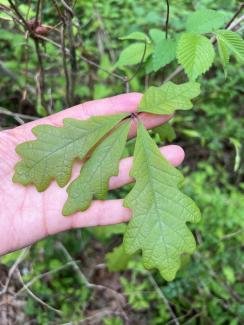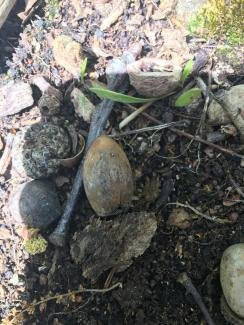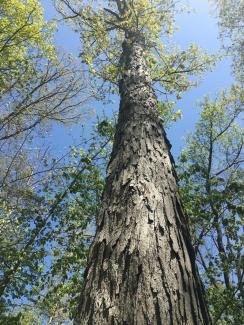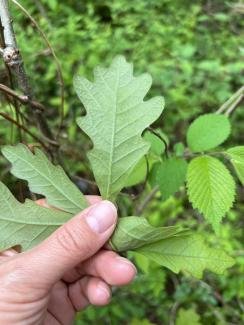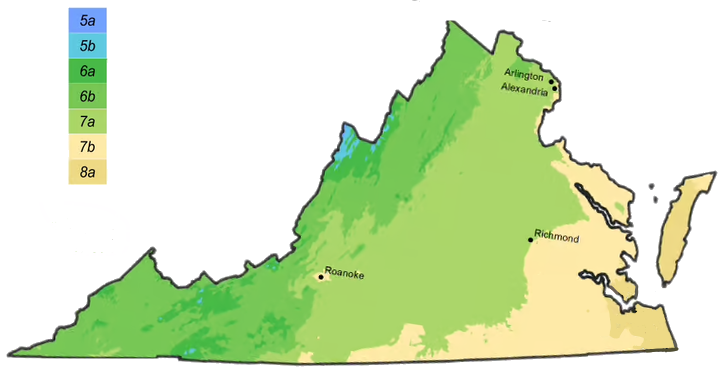
Habitat: Mesic to dry upland forests and woodlands; less commonly in well-drained bottomlands, wet flatwoods, natural ponds and depression\ swamps. Common throughout; probably our most common and widespread oak.
Wildlife value: High wildlife value for food and habitat. It supports a wide variety of butterflies and moths plus small mammals and songbirds. The Acorns are eaten by woodpeckers, blue joys, small mammals, wild turkeys, white-tailed deer, and black bear and are can be eaten by people after tannins are leached or boiled out. Plant NOVA Natives lists this species as particularly popular with the non-native honeybees
Notes: This large tree, up to 100 feet tall, can live up to 600 years (though recent urban and climate conditions have been stressing them). Good yard tree with few disease or pest problems, but it needs a lot of space. This tree is included in the Homegrown National Park: Keystone Trees and Shrubs.
Earth Sangha Inventory
Founded in 1997, the Earth Sangha is a nonprofit public charity based in the Washington, DC, region. The Wild Plant Nursery is the most comprehensive source of local-ecotype, native plants in the Washington DC region, and the region’s only facility dedicated exclusively to this type of propagation. “Local-ecotype” plants are propagated from local, wild, naturally-occurring populations and are well-adapted to local conditions and for wildlife species that depend on the local forms, such as pollinators. Inventory is updated on a weekly basis so number may not be accurate.
| Pots Available | Plugs Available | Location | Notes | ||
|---|---|---|---|---|---|
| 0 | 0 | Row | View My Wishlist |
